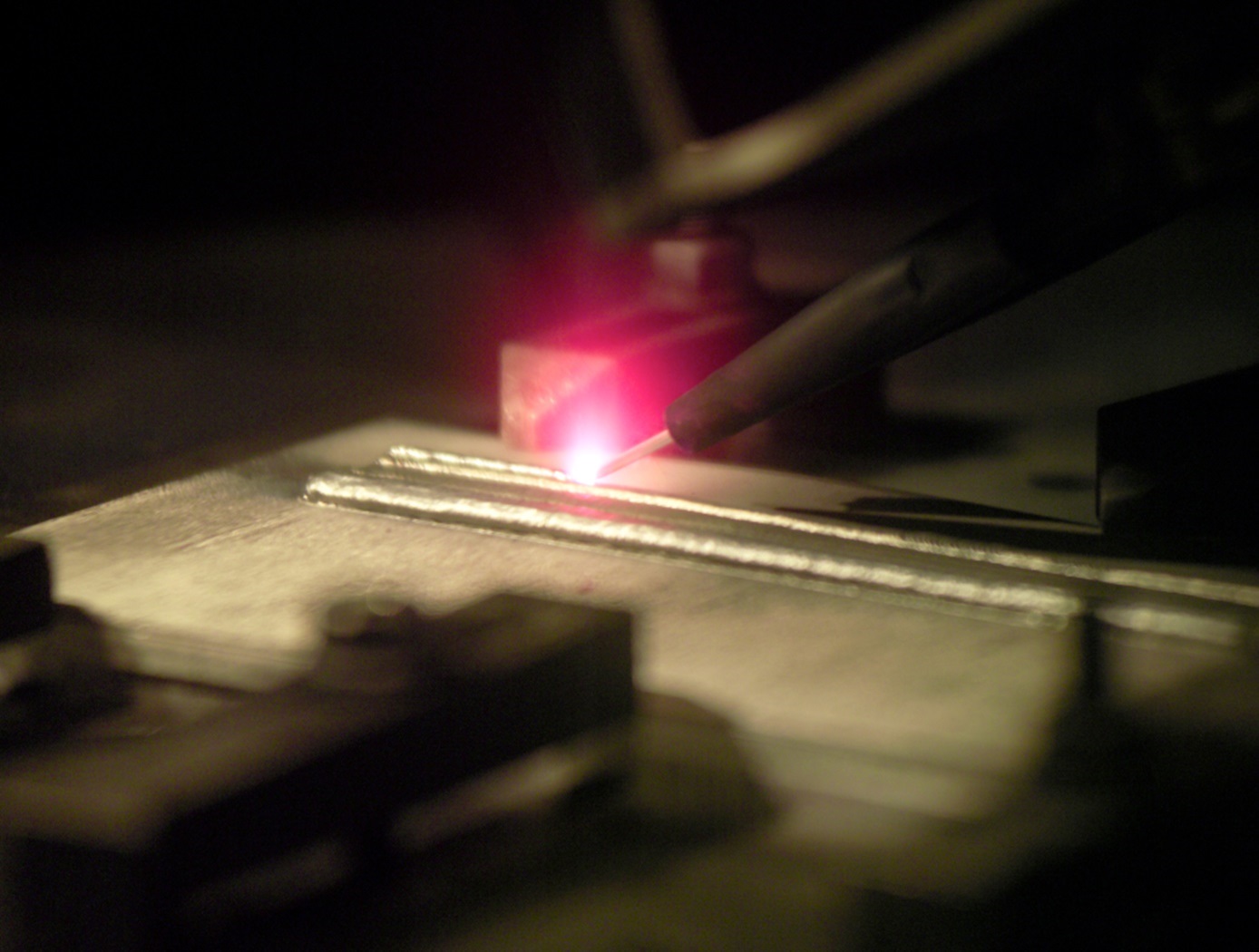Electron Beam Free Form Fabrication (EBF3)
Manufacturing
Electron Beam Free Form Fabrication (EBF3) (LAR-TOPS-164)
Metal deposition apparatus to build metallic components directly from CAD
Overview
Electron Beam Freeform Fabrication, or EBF3, is a process that uses an electron beam gun, a dual wire feed and computer controls to manufacture metallic structures for building parts or tools in hours, rather than days or weeks. EBF3 can manufacture complex geometries in a single operation and provides efficient use of power and feedstock. The technology has a wide range of applications, including automotive, aerospace, and rapid prototyping. It can build large metallic parts measuring feet in length, and has been reduced in size and power to enable 0-gravity experiments conducted on NASA's Reduced Gravity aircraft.
The Technology
EBF3 works in a vacuum chamber, where an electron beam is focused on a constantly feeding source of metal wire, which is melted and applied by drawing one layer at a time on a computer-controlled positioning table until the part is complete. By controlling the raster pattern, the e-beam selectively heats the outer edges of the wire if it strays from the melt zone. With such selective heating, the wire automatically curls away from the high heat outer edge and back into the region of the molten pool. Thus, with a fixed raster pattern, the process becomes self-correcting without any sensing or external control of process parameters. EBF3 can handle two different sources of metal feedstock at the same time, which can be controlled independently to allow precise control of mixing of materials during deposition.
EBF3 incorporates the following technologies, which can also be licensed individually: (1) a vapor-barrier vacuum isolation system that maintains a vacuum in the electron beam column adjoined to another chamber at higher pressure without loss of vacuum; (2) a system that controls and measures the height of an additive layer of metal using an electron beam in combination with a sensor and image processor; (3) a gas phase alloying system for wire fed joining & deposition, which is being developed for the controlled introduction of gases into molten metals in order to selectively impart beneficial properties to the final product (e.g. strength, corrosion resistance, etc.); and (4) a closed-loop system that is being developed to detect various fabrication anomalies and automatically send feedback to the fabrication system to modify the input parameters to maintain process consistency.

Benefits
- Self-correcting stabilization and optimization of e-beam during the deposition process
- Provides continuous and predictable deposition pattern
- Simplifies deposition of complex geometries
- Optimizes microstructural control of the solidified molten metal
- Provides efficient use of power and feedstock
- Improves automated operation
Applications
- Welding of metal structures for automotive, aerospace, and other industrial and commercial manufacturing
- Free-form fabrication of complex metal components in remote locations
- Near-net shape manufacturing and rapid prototyping
- Applicable to variety of metal fabrication markets, from automotive and aerospace to sporting goods and medical devices
Technology Details
Manufacturing
LAR-TOPS-164
LAR-17245-1
LAR-18183-1
LAR-18871-1
LAR-18871-1


